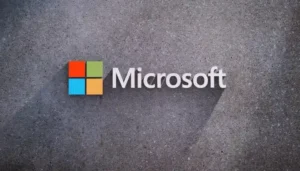Microsoft Teams is set to roll out a new feature in December 2025 that will automatically detect when employees are present in the office by monitoring their connection to the organization’s Wi-Fi network.
While the company positions this update as a productivity enhancement for hybrid workforces, the move has sparked widespread debate over workplace privacy and digital surveillance.
How the Microsoft Teams Feature Works
The Wi-Fi detection feature will allow Microsoft Teams to automatically update a user’s work location status to “In the Office” when their device connects to a mapped office Wi-Fi network.
This eliminates the need for manual check-ins and aims to help colleagues and managers quickly identify who is working onsite versus remotely.
According to Microsoft’s documentation, the system uses two primary detection methods:
- Connection to a known Wi-Fi network (SSID/BSSID)
- Plugging into a configured desk peripheral
Once triggered, Teams will reflect the user’s location within the app, potentially down to the specific building.
The feature will be available on both Windows and macOS platforms and is part of a broader set of AI-driven and productivity-focused updates to Microsoft Teams.
Intended Benefits for Hybrid Workplaces
Microsoft designed the feature to support hybrid work models by improving visibility and coordination.
In large organizations where employees frequently shift between remote and office work, knowing who is physically present can help streamline meetings, resource allocation, and team collaboration.
The company also notes that the feature will be off by default, giving IT administrators control over its activation.
Microsoft designed this opt-in approach to address initial concerns. It allows organizations to configure the feature based on their internal policies.
Privacy Concerns and Employee Pushback
Despite its intended benefits, the feature has raised alarms among privacy advocates and employees.
Critics argue that automatic location tracking—even within office premises—could lead to excessive monitoring and erode trust between employers and staff.
Some employees worry that the feature could prevent them from choosing untracked or private areas within the office, effectively limiting their autonomy.
Some employers may use it to enforce stricter attendance policies or penalize flexible work arrangements.
The debate echoes broader concerns about digital surveillance in the workplace, especially as companies adopt more tools to monitor productivity and presence.
While Microsoft emphasizes transparency and control, the rollout has reignited discussions about the ethical boundaries of workplace technology.
Note: We are also on WhatsApp, LinkedIn, and YouTube to get the latest news updates. Subscribe to our Channels. WhatsApp– Click Here, YouTube – Click Here, and LinkedIn– Click Here.



